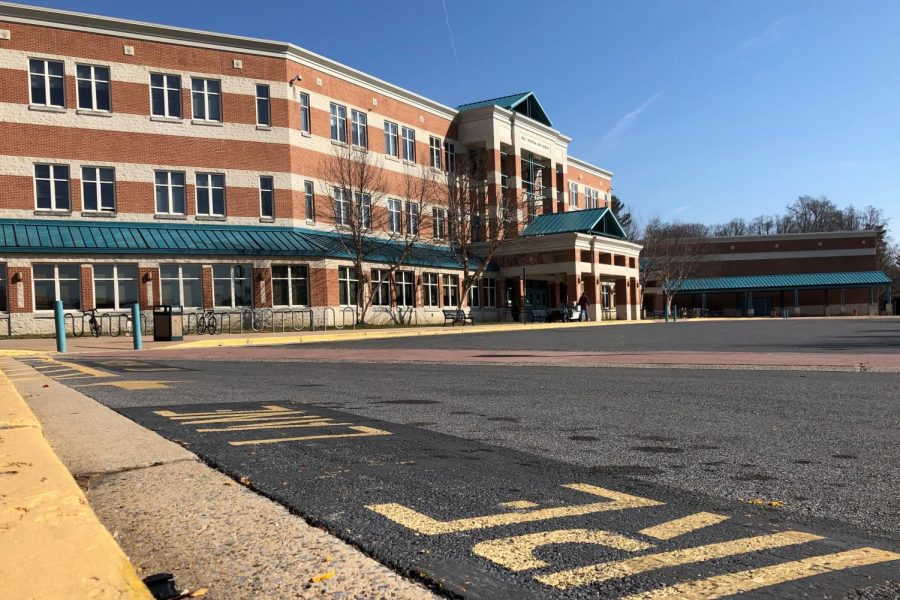Administrators confront troubling data on class placement
Students of color disproportionately enrolled in classes beneath their academic capabilities
November 23, 2020
This school year Whitman administrators informed select students and their families, a majority of whom came from racial minority backgrounds, of what administrators believed to be class misplacement. Data collected by the school indicated that these students of color were taking less rigorous classes than their grades and test scores indicated were appropriate for them.
Whitman administrators compiled the data which spanned over a three-year period from the 2016–17 to 2018–19 school years, subsequently recognizing the trend in placements throughout Whitman. Though this data for Whitman is limited due to the small amount of students of color who attend the school, the trend warranted intervention by the Whitman administration.
“The data indicated that access and opportunity to higher-level courses wasn’t necessarily a level playing field, based on the students’ background, race as one component,” Whitman principal Robert Dodd said. “Most of the kids that we had conversations with were kids of color, kids from different cultural backgrounds.”
Teacher recommendations or parent and student choice dictate which course path a student takes, either on grade level, one grade level above or two grade levels above. In MCPS, teachers issue recommendations throughout elementary and middle school. As students progress, however, the differences between the class trajectories solidify, over time making it more challenging for a student to move successfully into higher level courses, math resource teacher James Kuhn said. Eighth grade is the last year that teachers issue grade-wide recommendations in the Whitman cluster. In the second semester at Pyle Middle School — the Whitman cluster middle school — eighth grade teachers in core departments make recommendations for students. If parents want to overrule the recommendations and move their students either up into a higher course trajectory or down into a lower one, they may.
However, the overwhelming majority of parents and students tend to remain on the path suggested by an educator, several Whitman department heads confirmed. At Whitman, students of color were misplaced in their courses often enough to warrant retroactive intervention.
“Very few people wind up challenging that process,” Kuhn said. “I would say, maybe a dozen times a year I had that conversation with parents.”
In the 2016–17 school year, MCPS implemented new online data-compiling software called Performance Matters. Student data was less centralized in the years before the program’s implementation, as grades, standardized test scores and other data points were saved in separate systems. Performance Matters gave teachers and administrators the ability to sort and clarify the varied data sets.
“Back then, we had final exams and grades in classes, and that was really our only two data points,” Kuhn said.
The implementation of Performance Matters allows administrators to identify potential student misplacements quickly. It also allows teachers to make increasingly more data-driven recommendations and diminish the role that subjectivity plays.
The startling data doesn’t surprise some parents of minority students who say that, in their families’ lives, the impact of implicit bias — a term for subconscious bias — is common.
“I told my kids, when you go to school, you have to deal with certain things and that everything’s not fair,” said Whitman parent Angela Hart-Edwards, who is the school’s coordinator for the NAACP. “You have to pick and choose your battles. I like that now, we’re taking on the environment and trying to make everybody culturally competent.”
Minority students have directly grappled with adverse effects of potential implicit bias at Whitman. Minority Scholars Program president Jordan Shabani explained that students can feel overlooked by staff when they indicate to teachers that they are overwhelmed at school.
“I don’t really think it’s that new,” Shabani said. “When you’re a student who’s displaying a lot of mental health issues like anxiety or depression, if they’re a person of color, normally that’s put as a behavioral issue or a cultural thing. But with a white counterpart, a teacher or counselor is willing to help.”
The issue of potential implicit bias is not only a local issue but rather a national epidemic. A study conducted by American University associate professor of public policy Seth Gershenson examines the potential role race plays in the relationships between students and teachers.
Gershenson co-authored a 2016 study on educational biases — both implicit and explicit — which examined over 16,000 tenth graders from across the country. Each student was observed by their reading and math teachers, both of whom were asked to answer a questionnaire on how far they thought their students would pursue an education: either a four-year degree or more, or no college degree at all.
“When one of the teachers is white and one of them is black, not only did the teachers systematically disagree about how far the kid will go in college, or school, but the white teacher expects less [from black students] than the black teacher,” Gershenson said.
The effects of valuing some students over others, even subconsciously, has adverse effects on the education of the students perceived as “worse.”
“If the teacher really believes that, they might not try as hard with that student,” Gershenson said. “So if you’re a teacher, and you think that Jimmy isn’t serious about school or doesn’t have a lot of potential academically, you might shift some of your time and attention toward other students who you think have more potential.”
After seeing the data from Performance Matters during the last school year, Dodd said that he wanted to reexamine the course paths for students at Whitman.
“My strategy was to really use data — not to minimize or diminish the importance of teacher recommendations or opinions — but to really look at data to see where the kids’ strengths and weaknesses were and then say, ‘Who do we think would benefit from a higher level class?’” Dodd said.
MCPS requires that administrators use the educational practice of “vertical articulation” to combat issues like these. Dodd confirmed that he and Pyle principal Christopher Nardi are expanding this practice of counselors, teachers and administrators aligning curricula regularly in ways that aim to challenge students and help them navigate their course loads.
As a result of their findings, Whitman administrators opened discussions with both the students in question and their parents to raise concerns about placement in other class trajectories. The effect, in cases where students were receptive to administrators’ advice, was placement into a more academically challenging course, allowing them to move up to honors and AP levels, Dodd said.
Last year, Whitman administrators also collaborated with the counseling department to discuss the issue of students being misplaced again based on factors other than academic merit. The two groups helped found One Kid At a Time, commonly abbreviated to OneKAAT, a biweekly strategy meeting to, among other objectives, discuss the needs of specific students who could benefit from a course reassignment. The meetings last for one hour and the discussions, which center on specific students, often allow the group to only make decisions on up to four students at a time due to time constraints, resource counselor Kari Wislar said.
“OneKAAT provides ‘wrap around services’ to children who we identify as needing a change to their classes,” Wislar said. “For counselors, that can mean providing mental health support, weekly meetings, calling parents with updates and teacher conferences in order to readjust these students.”
Administrators are attempting to curb bias-related issues at Whitman, but bias-related problems in schools persist at other schools in the county. Locally, the Montgomery County Council passed a comprehensive racial equity law on November 19. The goal of the legislation is to measure the equity impact of all further bills and budget plans. Additionally, the law will establish the Office of Racial Equity and Social Justice to combat inequality in the community.
While administrators are relying on data more heavily as a metric of student success, teacher bias trainings are considered a necessary tool in ensuring that an educator’s recommendation is not impacted by any preconceptions.
“Good implicit bias trainings do work and they do a few things: First off, explaining what implicit bias is and it’s a natural way that our brains work. That’s the product of the world we live in and can’t be turned off,” Gershenson said.
At Whitman, implicit bias training has become a standard practice. MCPS has mandated certain trainings, including implicit bias trainings in recent years — but after meeting those requirements, local school administrators have autonomy in furthering its practice. This year, Whitman administrators collaborated with the Anti-Defamation League, a nationally recognized anti-hate group. In this partnership, the ADL plans day-long lessons which restructure some school days to train Whitman educators.
“The goal of all of our training program is to recognize bias and understand how bias can potentially come cause harm on individuals and society, build an understanding of the value and benefit of diversity, improve inner relations, and then confront racism, anti-semitism and all other forms of bigotry,” said Michelle Manger, ADL coordinator for the D.C. chapter.
Even with all of the new measurements in place, some students are worried that the steps Whitman administrators are taking aren’t enough.
“It starts at such a young age, in kindergarten and elementary school where there’s teachers placing biases on kids before they even open their mouths,” Jordan Shabani said. “Students have a lack of self-efficacy because they’re like, ‘my teacher doesn’t believe in me, why do I need to believe in myself?’”







